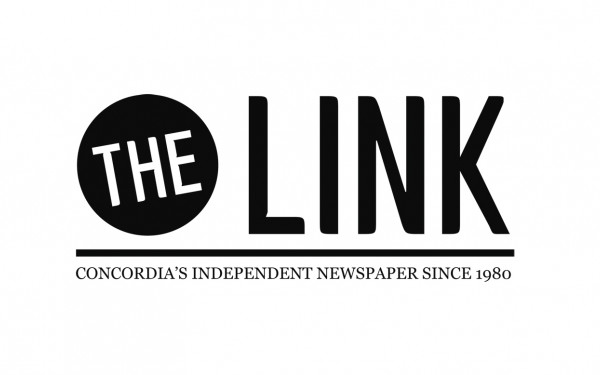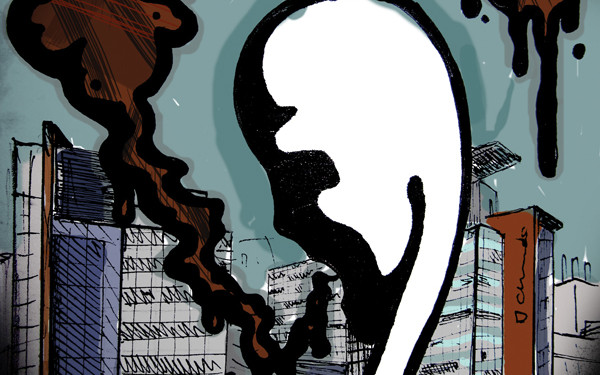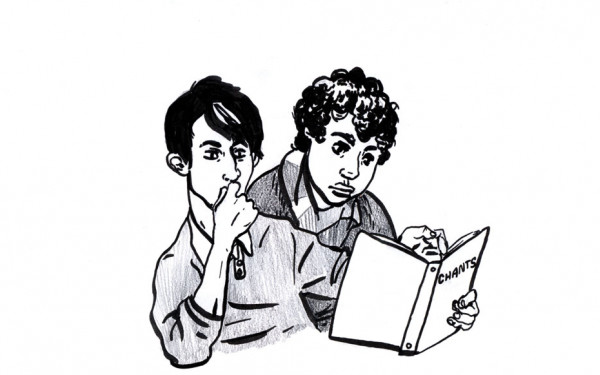Student Inventors Want Patent Control
ENCS Requests Concordia Update Intellectual Property Policy
For his final-year “capstone” research project, graduating Concordia engineering student Michael El-Jiz was curious about the applications of music in engineering, and created Bothoven, a robot that could read a sheet of music and play piano.
The first song Bothoven ever played was “Twinkle, Twinkle, Little Star.” Four days before his final presentation in March, Bothoven had transcribed and was ready to perform Mozart’s “Turkish March.” All it took was one click of a button. Before El-Jiz had time to swivel his chair around to see the robot play, he could hear it.
He’s not hearing it anymore.
“When you finish a project, you’re proud of it,” said El-Jiz, an electrical engineering master’s student. “But now it’s stored in a dark warehouse. It goes from being a trophy to being a dead project.”
Concordia engineering major Michael El-Jiz designed Bothoven, a robot that could read music and play piano.
Since El-Jiz used a Concordia computer with a licence for the MATLAB programming language, Concordia University owns the code and the copyright to Bothoven—and to many of his fellow engineering students’ projects.
But in the past month, both the Engineering and Computer Science Association and the Faculty of Engineering and Computer Science Faculty Council have adopted motions to request the university change its intellectual property policies.
The ultimate goal of the two faculty bodies is to have the policy reviewed and revised to give students the option of waiving Concordia’s ownership policy and owning the patent on their own projects.
According to VPRGS-9, the university’s current IP policy, students with an invention must report it to the research office, and the office decides whether they will patent it or not if it is considered a “Qualifying Invention.” If they choose to do so, there is a sharing agreement between the inventor and the university.
If the university decides to take the work to the market, the student will get a share of the income but no control over commercialization. And if the office refuses and the student pays to patent it, the university still has the right to sublicence it.
“If you’re Mark Zuckerberg and you make Facebook, it becomes this massive legal battle,” said ECA electrical and computer engineering representative Gregory Gibson.
A Policy that Stifles Innovation?
A motion on IP policy was passed at the ECA council on Nov. 18 and recommends that “Concordia revise the policy such that intellectual property created by students would remain the legal property of the students responsible for its creations.”
The motion also asks that the university “include ECA representatives on the review committee throughout the process of revising the policy on intellectual property.”
“I want the university to stay out of my IP,” said Gibson.
Concordia spokesperson Chris Mota says Vice-President of Research and Graduate Studies Graham Carr or someone from his office will meet with the ECA to get a “better understanding” of the concerns behind this motion.
“When you finish a project, you’re proud of it. But now [mine] is stored in a dark warehouse. It goes from being a trophy to being a dead project.” —Michael El-Jiz, electrical engineering master’s student
Until then, she says the administration is unable to provide further comment, although Concordia President Alan Shepard said at the Oct. 16 Board of Governors that he planned to look into how the policy “affects students, graduate and undergraduate, by the end of the academic year.”
Another IP motion was passed on Nov. 29 by the Engineering and Computer Science Faculty Council. ENCS-FC now officially supports the ECA, saying the current policy on intellectual property is “very burdensome” and resolved to officially request that the university “revise the policy on IP such that the rights of students to the intellectual property they have created be respected.”
An opt-out agreement exists for the capstone project, which allows ENCS undergraduates to patent their inventions without the university having any claim to it.
However, if a Concordia faculty member is found to be an inventor of the project under VPRGS-9 guidelines, the opt-out agreement is rendered null and void, and the university retains rights to the invention.
“This opt-out form has a big loophole because part of the capstone project means you have to have a professor as your supervisor,” explained Allison Hipgrave, ECA mechanical and industrial engineering representative.
The capstone outline for mechanical and industrial engineering states: “[S]tudents are required to implement the design of an actual product or system under close supervision of the project supervisors.”
“Technically, because you’re using and collaborating with faculty advisors, the capstone technical coordinator and using the university’s facilities, the actual concept design belongs to the university,” said Gibson.
Currently, scholarly writing, productions, artwork and other similar creative or research products are excluded from this IP policy. Gibson says it’s questionable why the policy isn’t applied across the board.
“If the university just wants to milk students dry, well, what if we have the next J.K. Rowling?” said Gibson. “Shouldn’t they also have a hand in that honey pot?”
Gibson says he believes the university doesn’t apply this policy to art students because they “wouldn’t be creative [or share their] best ideas during workshops.”
But he says the same is true for all students, engineering majors included: to be innovative, Gibson says students must have an environment where they can be “innovative without [being] penalized for it.”
“The university is shooting themselves in the foot,” said Hipgrave. “Students are not creating what they are capable of. They’re creating to pass the class.”

_900_597_90.jpg)
_600_832_s.png)

_600_375_90_s_c1.jpg)


